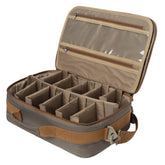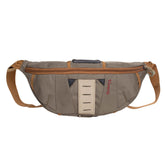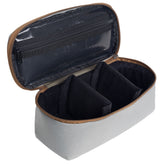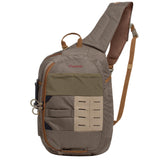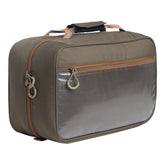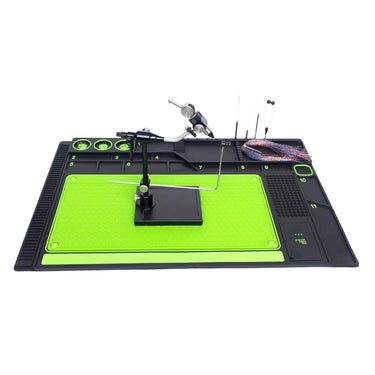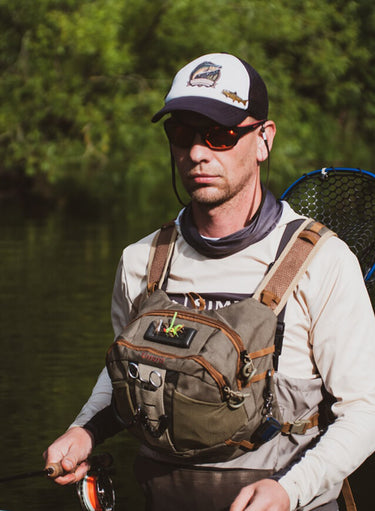Fly Line: Understanding Switch Fly Lines and Their Use Cases
When I first encountered the term "switch fly line," I was intrigued by its unique application in fly fishing. A switch fly line is specifically designed for use with switch rods, allowing for versatile casting techniques that combine the benefits of both single-handed and double-handed casting styles. Understanding its function can significantly enhance your fishing experience.

Switch fly lines work by providing a balanced taper that allows for easy casting and better control in various water conditions. They are ideal for reaching distant spots without the need for a full spey setup. I often find that using a switch line allows me to switch between different casting styles effortlessly, making it a valuable tool for any fly angler.
When deciding whether to use a switch line versus a traditional fly line, it's essential to consider your fishing environment. Switch lines offer advantages in situations where you need to cast longer distances or navigate currents, while traditional lines may be sufficient for smaller waters. Additionally, compared to spey lines, switch lines can be more user-friendly for beginners, giving them a chance to experience the art of casting without the steep learning curve associated with spey techniques.
Understanding Switch Fly Lines
Switch fly lines blend the characteristics of traditional and specialized fly lines. They are versatile tools suited for various fishing techniques, including two-handed casting and single-hand casting, accommodating a range of rod lengths and line weights.
What Is a Switch Fly Line?
A switch fly line is designed to be used with switch rods, which are typically between 10 to 11.5 feet long. These lines feature a longer belly and a running line, allowing for both overhead and Spey casting techniques. The switch line accommodates various fishing styles, from nymphing to streamer and dry fly fishing, making it suitable for different species and water types.
Components of a Switch Fly Line
Switch fly lines comprise several key components:
-
Belly: This is the main portion of the line, designed to carry the energy during the cast. Its length and taper influence how well the line casts and how it presents the fly.
-
Running Line: This section connects the belly to the backing, facilitating line management when casting or retrieving.
-
Shooting Head: Often integrated into switch lines, the shooting head helps maximize distance and improve casting in various conditions.
These components work together to provide control and precision during casting.
Switch Line Versatility
The versatility of switch fly lines is one of their standout features. I can use a switch line for different casting styles, including two-handed techniques and single-hand methods. This adaptability allows me to fish effectively in varying water conditions and target diverse species.
Switch lines excel in situations where traditional single-handed rods may be less effective, such as in tight or heavily vegetated areas. Their design enables efficient casting of heavier flies and sinking lines, essential for nymphing and streamers. This makes them a valuable addition to any angler's gear.
Choosing the Right Switch Line
Selecting the appropriate switch line requires understanding various factors. From comparing switch and spey lines to knowing when to use a switch line, each consideration directly impacts casting performance and fishing success.
Switch vs Spey: Understanding the Differences
Switch lines and spey lines cater to different fishing techniques. A switch line is typically shorter, designed for versatility, allowing anglers to use both two-handed and single-handed rods. In contrast, a spey line is longer and optimized for the spey casting style, often requiring more space for effective casting.
Switch lines generally offer greater ease in transitioning between techniques. They accommodate the use of streamers and nymphs, while spey lines excel in dead-drifting and presentation of dry flies. Understanding these differences ensures I select the right line for my fishing style.
When to Opt for a Switch Line Over Traditional Fly Line
I find that choosing a switch line over a traditional fly line is ideal when targeting larger bodies of water or when wind conditions are challenging. Switch lines provide increased casting distance and allow me to utilize various techniques.
If I’m targeting moving water or fishing from a boat, a switch line offers the flexibility needed for effective casting. It also benefits anglers without two-handed rods who wish to try techniques typically reserved for them. This flexibility makes it an excellent option for casting techniques such as Scandi and Skagit.
Matching the Switch Line with Your Rod and Reel
Properly matching a switch line with my rod and reel is crucial for success. I ensure that my switch line's weight is compatible with the specifications of my switch rod and the reel's capacity.
When selecting a switch line, I consider the rod’s length and action. A two-handed rod may require a heavier line than a single-handed rod. I also pay attention to the line's taper type, as it influences casting performance and the ability to present various fly types, including streamers and dry flies. This careful matching enhances my overall casting experience and efficiency on the water.
Advanced Techniques and Tips
In my experience, mastering advanced techniques with a switch fly line can significantly enhance your casting effectiveness and tackle versatility. Understanding specific casting methods and how to choose sink tips adds depth to your fishing approach.
Mastering the Spey Cast with a Switch Line
To master the Spey cast using a switch line, I focus on two primary techniques: the snap-T and roll cast. These methods allow for smooth line transitions and powerful energy transfer.
-
Snap-T: This technique involves positioning the line downstream, creating tension before powering your cast. It's effective in tight spaces, making it perfect when trees or other obstacles are nearby.
-
Roll Cast: This is another vital technique. I employ it to lift and reposition the line on the water, ideal for launching the cast when I don’t have back casting room.
Utilizing these techniques can improve distance and accuracy. Practicing these casts regularly will help in developing muscle memory, which is essential for fluid performance.
Switch Line Sink Tips and Their Applications
When it comes to sink tips, I choose specific weights based on the conditions and species targeted, such as steelhead. The right sink tip can dramatically affect how quickly I reach the fish.
-
Common Sink Tip Options: Ranging from 1 to 10 feet in length, the typical weights are measured in grains. A general rule is to use a heavier sink tip in deeper waters.
-
When to Use: If I’m fishing in fast water or near structure, I prefer a heavier tip to get my fly down quickly. Conversely, for shallower areas, a lighter sink tip helps to prevent snagging.
Knowledge of head lengths between Skagit heads (shorter) and Scandi lines (longer) can inform my tool choice based on the type of fishing scenario. Each application and condition calls for tailored sink tips to ensure effective presentations.



